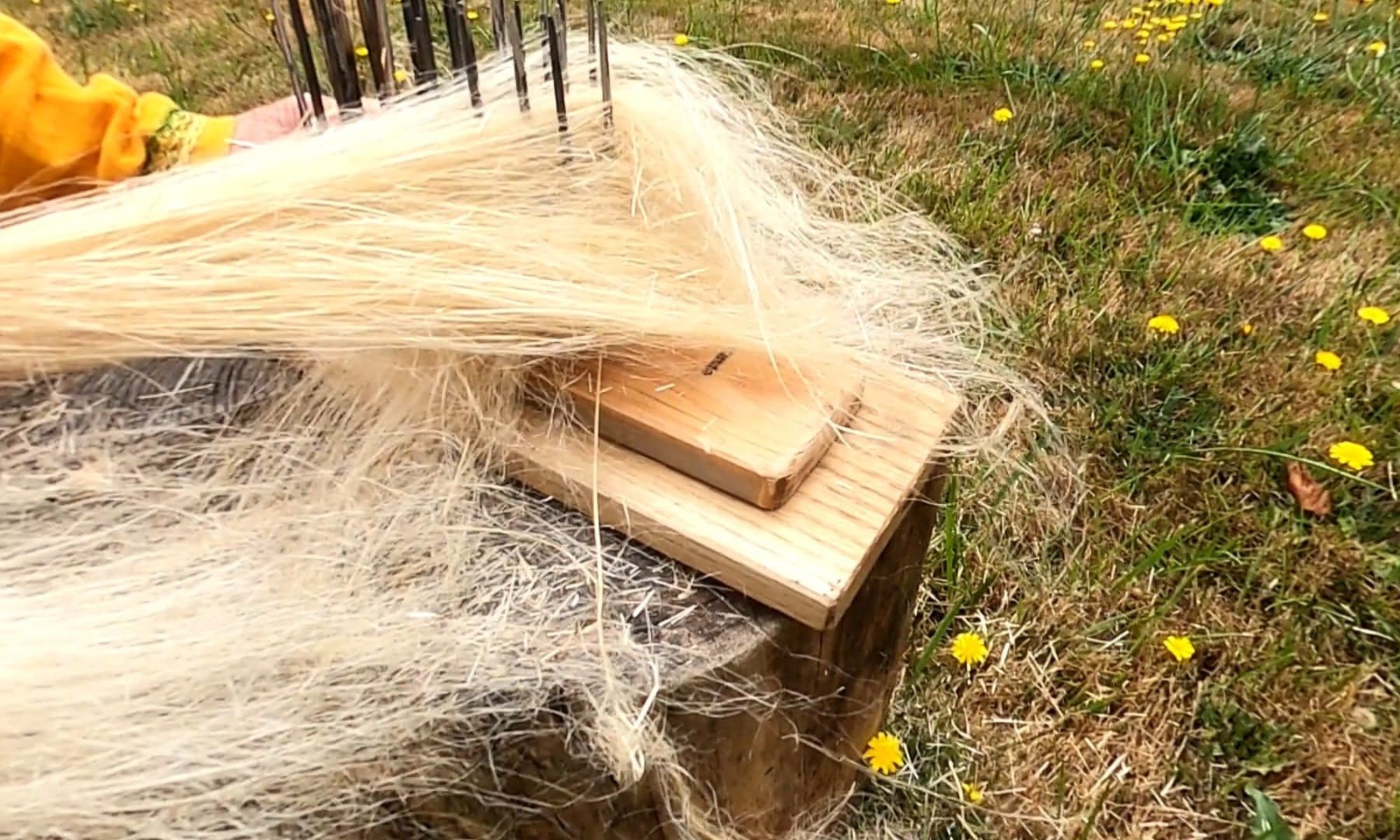There has been some progress even though it has been awhile since I have written about it. In the past I have written about the growing and processing of the flax plant . Then on to the start of retrieving the fibers from the shaft.
The original flax mallet I used was made up of two pieces, handle and mallet. It could not take the pounding and came apart. I was able to get a mallet out of one solid piece of maple wood from my neighbor that lathes wood. This new mallet held up perfectly. Heavy enough that with every down stroke to hit the fiber was not as labor intensive as I would have thought. I did have to start wearing gloves as I was getting new calluses, one blister at a time.
The mallet broke the flax with great efficiency. It was very satisfying to see the shaft breaking off exposing the fibers. It gave me renewed energy when my muscles would start to complain,
The next step, usually, is to use a ‘scutching knife’. A piece of wood shaped like a knife but with rounded edges. Laying the broken bundle over a flat board and raking down on the fibers to remove more of the outside woody shaft. I prefer to use my fingers, raking my fingers through the stands. Using my nails to remove. as much of the shaft as possible. I saw it done this way on videos of fiber production from the Ribe Viking Center in Denmark. I hadn’t been able to land my hands on a true scutching knife so I improvised. Being pleased with the results I choose to continue to do it this way.
For the next step, the flax is combed using what is called a ‘hackle’. It is a piece of wood with nail going through it to make a comb. My first hackle was made for me by HE Sven Redbeard OL. It has hand forged nails 4 inches long. Not to closely spaced as it is for the first combing to remove more of the shaft from the fibers. It also removes shorter fibers, which I will save and recomb. They can still be used. Now I use a finer comb that I was able to find on the internet. An antique from the west coast. The nails on this one are shorter, sharper, and closer together. Now most of the shaft has been removed, not all though, I still needed to find one more even finer hackle to remove last bits. The fibers were looking fantastic. They felt silky to the touch and had a really nice blond color.
the next part of this journey is to get all of the bundles I have processed. Approximately 26 .
There is video up on youtube now that is showing my progress up to this point. Many thanks to Maricka for the video she took and edited.

Hello fellow 10th century Viking lady.
Thank you for producing the fascinating videos on 10th C flax production. I have spectacularly failed at growing/getting fibers from either flax or nettles. Other than that, I have dyed and spun many innocent plants that happened to be growing near where I was walking. You encourage me to try again with flax (/nettles).
Lady Eichling von Amrum
I’m so glad you are inspired to try fiber processing again. I have found it a rewarding experience. Thank you for your comment